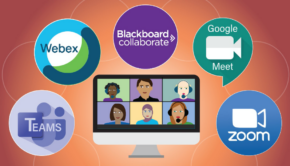Digital Adoption Needs More than Just Tools to Succeed
The list of must-adopt technologies for businesses is growing. Just over the past few years, technologies like data and analytics, blockchain, artificial intelligence (AI), and the Internet-of-Things (IoT), have all been touted as difference-makers and that failing to adopt them could mean doom for a business.
The hype is somewhat deserved. Early adopters of these technologies are finding massive successes in their efforts. For example, Netflix‘s use of big data and analytics to analyze viewer behavior and preferences has enabled the streaming platform to determine what kinds of shows would attract the most audiences. This has helped the company make calculated licensing decisions and its stable of hit shows has attracted more than 137 million subscribers worldwide.
These stories have put pressure on other organizations to introduce more digital tools to their operations. Digitizing business processes could lead to efficiencies that make businesses more competitive. As such, many companies are ramping up their digital adoption efforts in hopes of maximizing the benefits that technology could provide.
Unfortunately, digital adoption isn’t simply a matter of subscribing to a bunch of cloud-based applications and then expecting the organization to instantly transform into a powerhouse. Digital adoption demands strategy and meticulous implementation to succeed.
Create a Strategy
Businesses can encounter various challenges to digital adoption including the lack of focus, resistance to change, and skills gaps. Careful planning could help organizations mitigate most of these concerns.
A basic pitfall to avoid, especially for smaller operations, is hype. The emergence of cloud-based software-as-a-service (SaaS) solutions has made enterprise-grade tools accessible. It can tempting for companies to try them all out. However, haphazardly injecting digital solutions into one’s ways of working can negatively impact the status quo and snowball into bigger problems later on.
Leaders must first assess the most pressing pain points. From there, they can set concrete goals. These can be as specific as “fulfill X number of orders in a day” or
“resolve Y number of customer complaints in a week.” This way, it would be easier for them to identify and evaluate what kinds of digital solutions are available that would enable them to reach their goals.
Involve End Users in the Decision
It’s not just the tools that digital adoption efforts have to consider. The human aspect plays a major role in their realization. Many efforts actually end up struggling because of the lack of buy-in from end users.
When staff members refuse to follow the new processes and use the tools, the effort is bound to fail. And it’s understandable from the perspective of your team, with so much buzz nowadays surrounding the cybersecurity and identity theft dangers associated with life in the cloud. The risk of email phishing scams alone is enough to keep people away.
Change is always a tough thing to manage. So, instead of simply imposing these new practices on people, leaders should involve end users in the decision-making process. It’s now common for buying teams to include representatives across stakeholders and to exercise due diligence by doing research on potential solutions. This can sometimes lengthen the decision process as teams often only reach out to vendors more than half-way through their process.
However, involving end users gives them a much-needed sense of responsibility and ownership for the effort. There’s also no harm in contacting vendors early so that they could organize demos and provide proofs-of-concept. Besides, vendors can now use remote demos and virtual labs which buying teams can access to try out the software. This way, end-users could check how matched the solutions are to their needs and if the interfaces would be user-friendly enough for easy implementation.
Provide Training
One critical aspect of rolling out new tools and processes is training. No matter how intuitively an application’s interface could be designed, it’s impractical to expect all users to be able to figure things out on their own. Companies should make the effort to properly onboard and orient employees.
User education starts with making sure everyone understands the reasons why changes have to be made. Many onboarding efforts fail to communicate the rationale behind the digital adoption effort. Users must be made aware of what exact business goals the effort seeks to achieve and how these changes could benefit them as workers.
This said, users have to be trained in the actual use of the applications. Companies could look into using digital adoption platforms to help guide staff. Through such platforms, visual cues can be placed over the existing user interface to serve as walkthroughs to the software’s various features and functionalities.
Trust the Process
Business must keep in mind that digital adoption isn’t a straightforward process. The right selection of tools are important but they shouldn’t overlook the other factors that come into play when trying to improve organizations through technology.
Companies should also take care to track and monitor their progress, using their goals as guide. If ever issues arise or if targets are not being met, companies should also consider pivoting in their strategy and find other solutions that work in their specific context.
While digital adoption does entail plenty of work, businesses stand to gain much from their efforts. With these new technologies, even smaller operations have the chance to overtake their competition and even challenge industry giants.



















